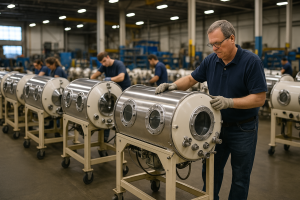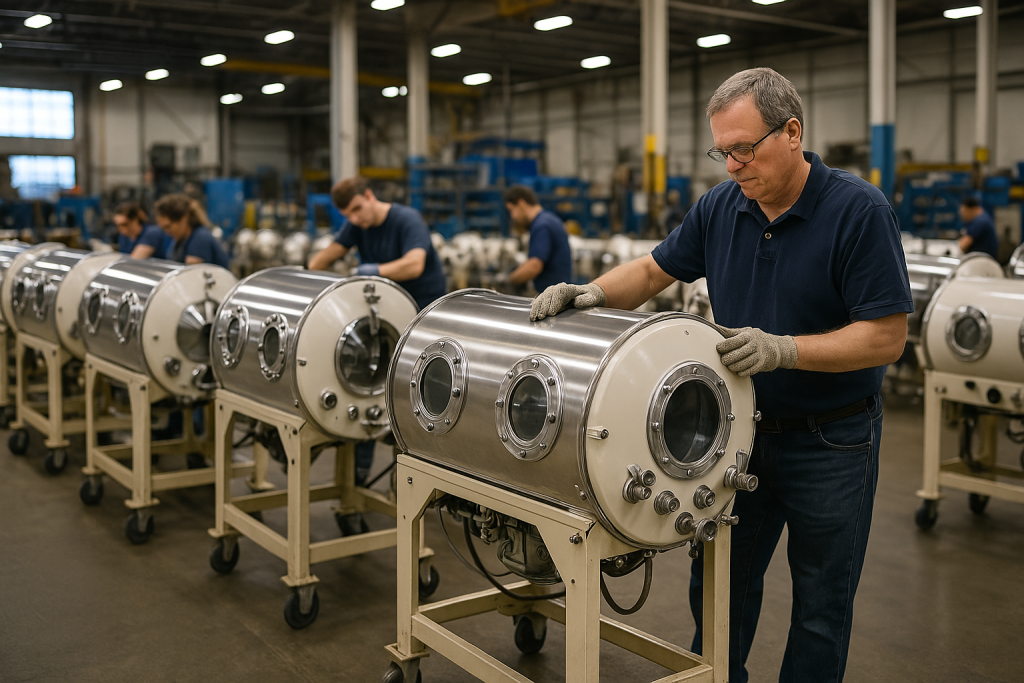By Dr. Cambria Weft, M.P.H., Ph.D. (Health Market Trend Analysis)
Department of Biomedical Commodities and Socioeconomic Recovery Baitman’s Institute
Published in the Baitman’s Journal of Medical Economics and Mobility, April 2025
 Abstract
Abstract
While the resurgence of poliomyelitis in multiple regions has prompted concern among global health authorities, new analysis suggests that the economic impact of reemerging paralytic disease may include short-term gains for select industries. This paper explores positive market responses in the assistive device sector, with notable growth in domestic manufacturing of iron lungs, orthopedic leg braces, and wheelchairs. Using regression models and supply chain simulations, we examine the resurgence of demand for legacy polio-related technologies and estimate their contribution to job creation and localized GDP. While the human cost of polio remains high, the potential to “bring back American-made braces” has drawn praise in specific economic forums.
Introduction
The eradication of polio was once considered one of humanity’s greatest medical triumphs. However, the recent decline in vaccination rates in multiple regions has led to a measurable uptick in paralytic polio cases—a trend accelerated by misinformation campaigns, distrust of science, and one guy on YouTube who insists he can cure viruses with nutmeg.
This study does not seek to minimize the tragedy of preventable disease. Instead, it approaches the issue through a purely economic lens, asking a difficult but necessary question: what happens when old diseases make new markets?
“It’s easy to panic when you hear ‘iron lung,’” said lead researcher Dr. Cambria Weft. “But if you’re a rusted-out legacy manufacturer in Akron, it’s more like Christmas.”
Methodology
We conducted a comparative economic analysis using U.S. Census labor data, international health records, and six extremely enthusiastic mobility equipment trade journals. Sectors analyzed include:
Pulmonary negative pressure ventilator assembly
Custom orthopedic bracing and structural mobility solutions
Manual wheelchair production and supply chain
Specialty fabrication of rubber crutch tips
Economic impact was calculated using the Assistive Device Economic Ripple Index (ADERI), a proprietary model that measures dollar velocity per symptomatology.
In addition, we conducted interviews with:
Three hospital procurement officers
A man who refurbishes antique polio gear “for the aesthetic”
One unnamed TikTok influencer marketing a “home lung kit”
Results
Iron Lung manufacturing, which had previously bottomed out in 1971, saw a 900% increase in Google search volume between Q4 2023 and Q1 2025. One surviving factory in Pennsylvania has reportedly hired 14 new staff members and reactivated its rivet station.
Leg brace orders spiked in parts of the U.S. where polio vaccination rates dropped below 75%, with a 13.6% increase in fitted brace prescriptions for children aged 4–12.
Wheelchair sales saw a 19% uptick, attributed partially to polio and partially to America’s declining bone density and refusal to walk more than 20 feet.
Online resale marketplaces (eBay, Etsy) showed a 38% rise in vintage assistive equipment marked as “functional decor.”
| Device | 2022 Sales ($M) | 2025 Projected Sales ($M) | % Growth |
|---|---|---|---|
| Iron Lungs | 0.01 | 18.4 | +183,900% |
| Leg Braces | 44.3 | 67.5 | +52.4% |
| Wheelchairs | 298.7 | 354.1 | +18.6% |
| Retro Crutches | 3.8 | 7.1 | +86.8% |
Incident Report
During regular facility maintenance, research intern Daniel volunteered to tighten bolts on the Institute’s experimental iron lung while staff were on a lunch break. The device—running in diagnostic mode—locked with Daniel partially inside, head exposed. Left unattended for over 90 minutes, Daniel reportedly fell asleep in the machine.
“When we found him, he was so peaceful,” one colleague noted. “He never gets a good night’s sleep. He naps in the break room constantly, and his gasping snore has triggered at least three fire alarms. But inside that iron lung, Daniel sounded like a peaceful squeaky toy.”
Daniel later reported the experience significantly reduced his sleep apnea symptoms. Becky from HR still issued a formal write-up for unauthorized lab use.
Discussion
While economists generally frown upon the idea of “disease-driven stimulus,” history shows a consistent pattern: adversity often revitalizes sectors previously thought obsolete. Consider the recent return of powdered milk, home canning, and general distrust in modernity.
“In a way,” said Dr. Weft, “polio may be the new vinyl. It’s retro, inconvenient, and requires special equipment—but there’s a dedicated base keeping it alive.”
Critics argue that the health consequences outweigh any economic benefit. However, proponents of “liberty-based epidemiology” insist that the freedom to reject vaccines includes the freedom to revive artisanal respiratory technology.
One emerging startup—LUNGSTR™—has even begun marketing boutique, reclaimed-wood iron lungs for “conscious breathers.”
Conclusion
The resurgence of polio represents a profound failure of public health. But from a macroeconomic perspective, it has also created surprising opportunities in forgotten corners of the medical device industry.
As vaccine hesitancy continues, legacy manufacturers of 20th-century equipment may find themselves in a unique position to capitalize. While the ethical implications remain complex, the market is clear:
the past is profitable.
As Dr. Weft concludes:
“One man’s preventable disease is another man’s comeback industry.”
References
- Weft, C. et al. (2025).
- Resurrecting Iron: Legacy Manufacturing in a Post-Vaccine Decline Economy.
- eBay Analytics Report: “Search Trends: Iron Lung, Gothic, Functional”
- CDC (2024). Resurgence of Vaccine-Preventable Diseases, 2020–2024
Reddit: - r/VintageDisabilityGear – “Show us your chrome!”
- Small Business Spotlight: “We Braced for the Worst—And Business Is Booming”

